井下移动救生舱结构设计(含CAD零件图装配图)★
无需注册登录,支付后按照提示操作即可获取该资料.
井下移动救生舱结构设计(含CAD零件图装配图)★(开题报告,中期检查表,外文翻译,实习报告,论文设计说明书35000字,CAD图13张)
摘 要
多数矿难表明,矿井事故发生后形成的高温,有毒有害气体环境是造成矿工伤亡的主要原因。为井下矿工提供安全可靠的救生舱、避难硐室是降低伤亡的主要手段,是目前国际矿山应急救援的发展趋势和方向,煤矿井下移动式救生舱的设计可以为外部救援争取救援时间,保障矿工朋友们的安全。
本文通过对救生舱的研究,完成了一整套救生设备的结构设计,首先主要介绍国家的相关规定。接着依据国家规定,确定设计目标。之后计算出救生舱的容量要求,进而确定的救生舱的整体结构。除此之外,本文还通过了一些技术参数验证,对井下救生舱内部环境做了更好的安全措施,确保矿工能够有足够的时间等待救援。本文还介绍了有关救生舱的维护及保养内容。在最后说明了以后需要改进的方向。
关键词: 救生舱 避难硐室 结构设计
Abstract
Most ore difficult to show that mine after the accident of the formation of the high temperature, toxic or harmful gases environment is the main reason for the casualties caused miners. To provide the safety of the miners escape capsule, shelter cavern is the main means to reduce casualties, is the present international mine rescue development tendency and the direction, the design of the underground coal mine escape capsule mobile for external aid for relief time, ensure the safety of the miners friends.
This article through to escape capsule research, completed a set of survival equipment structure design, first mainly introduces the relevant provisions of the state. Then according to state regulations, to determine the design goal. After escape capsule capacity requirements calculated, and determine the overall structure of the escape capsule. In addition, this paper also through some technical parameter validation, underground escape capsule internal environment to do better safety measures, to ensure that miners can have enough time to wait for rescue. This paper also introduces the escape capsule maintenance and maintenance content. In the final shows the need to improve after the direction.
Key words: escape capsule shelter cavern structure design
矿井救生舱设置地点和数量
矿井应根据井下作业人员和巷道断面等情况,结合矿井避灾路线,合理选择和布置移动式救生舱。
有突出煤层的采区应设置采区避难硐室或救生舱,设置位置应当根据实际情况确定,但必须设置在防逆流风门外的进风流中。煤与瓦斯突出矿井以外的其他矿井,从采掘工作面步行,凡在自救器所能提供的额定防护时间内不能安全撤到地面的,必须在距离采掘工作面1000米范围内设置。
突出煤层的掘进巷道长度及采煤工作面走向长度超过500米时,必须在距离工作面500米范围内设置避难硐室或救生舱。
救生舱规格和数量应满足所服务区域内同时工作的最多人员的避难需要。
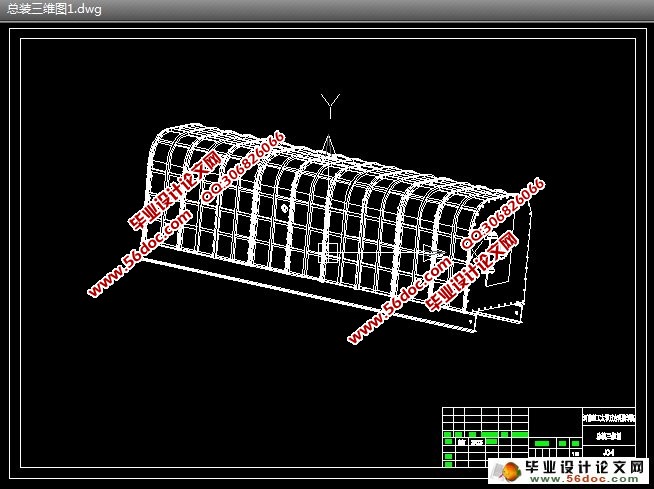
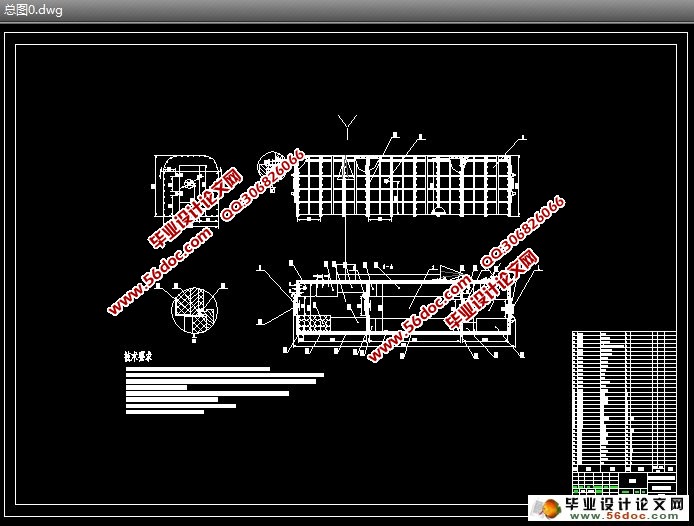
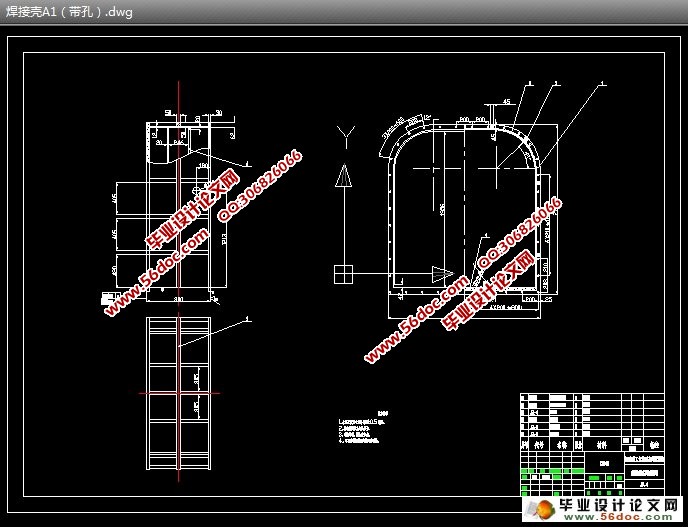
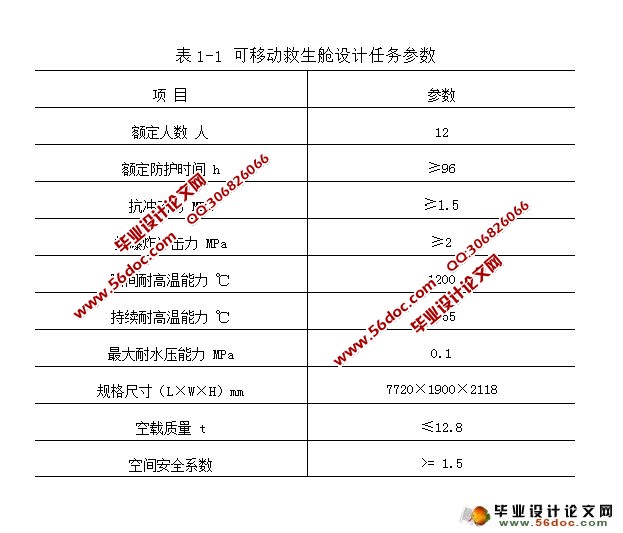
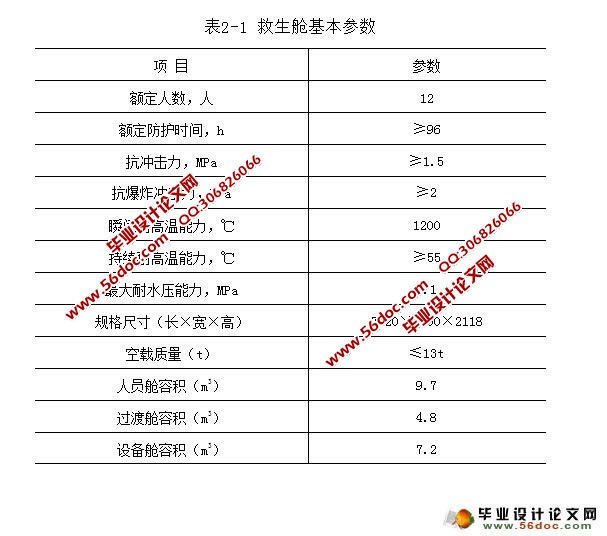
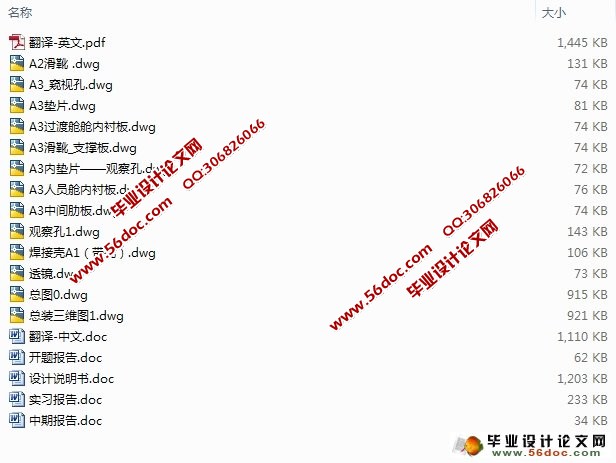
目 录
前 言 1
1 绪论 2
1.1 研究意义 2
1.2 相关领域国内外技术研究现状 4
1.2.1 国外紧急避险系统现状 4
1.2.2 国内紧急避险系统现状 6
1.2.3 国外可移动式救生舱的基本情况及特点 8
1.2.4 国内可移动式救生舱的基本情况及特点 14
1.2.5 国外应用现状及国际知名应急避难室生产企业及产品 15
1.3 本文可移动救生舱设计任务 17
2 煤矿井下移动式救生舱技术要求 18
2.1 适用范围 18
2.2 编制依据 18
2.3 基本要求 18
2.3.1 矿井救生舱设置地点和数量 18
2.3.2 救生舱安放硐室的要求 19
2.4 通风设施 20
2.5 供水设施 20
2.6 供电设施 20
2.7 通讯设施 21
2.8 功能及配置 21
2.9 管理与维护 25
3 救生舱结构设计 27
3.1 保护壳壳材料的选择 27
3.1.1 选用材料的一般原则 27
3.1.2 选材的方法与步骤 28
3.1.3 保护壳材料的确定 30
3.1.4 产品的结构设计 30
3.1.5 产品的安全防护设计 32
3.1.6 使用环境 34
3.2 保护壳壳体的设计 34
3.2.1 焊接结构的设计原则 34
3.2.2 保护壳体焊接结构设计 37
3.3 观察孔的设计 37
3.3.1 观察孔应满足的条件及其结构 37
3.4 其他结构的设计 39
4 救生舱的移动装置 42
4.1 绞车 42
4.1.1 绞车的主要类型 42
4.2 滑靴 43
4.3 救生舱移动装置工作原理 43
5 救生舱模型的建立 44
5.1 Pro/E软件介绍 44
5.1.1 Pro/E的概述 44
5.1.2 Pro/E的特点和优势 44
5.2 矿用救生舱各个零件模型的建立 46
5.2.1 保护壳模型的建立 47
5.2.2 带观察孔保护壳模型的建立 47
5.2.3 紧急舱门模型 48
6 技术参数验证方法 49
6.1 基本参数的测量和计算 49
6.1.1 参数测量 49
6.1.2 参数计算与合理性的验证方法 50
6.2 主要技术参数验证方法 52
6.2.1 气密性的验证方法 52
6.2.2 耐高温的验证方法 53
6.3 救生舱各系统防护试验方法 56
6.4 氧气供给保障系统 58
6.4.1 压风能力、噪声测定 59
6.4.2 压缩氧供氧 60
6.4.3 氧气自救器数量计算 60
6.4.4 化学产氧 61
6.5 空气净化与温湿度调节系统 61
6.5.1 压缩空气 62
6.5.2 CO2的净化 62
6.5.3 CO的净化 64
6.5.4 温度控制系统 64
6.6 动力保障系统 66
6.7 生存保障系统 67
7 井下可移动救生舱管理及维护保养 69
7.1 队伍组织 69
7.2 日常维护管理 69
7.3 舱内各设备的保养 70
7.4 培训与应急演练 75
8 全文总结 76
致谢 78
参考文献 79
